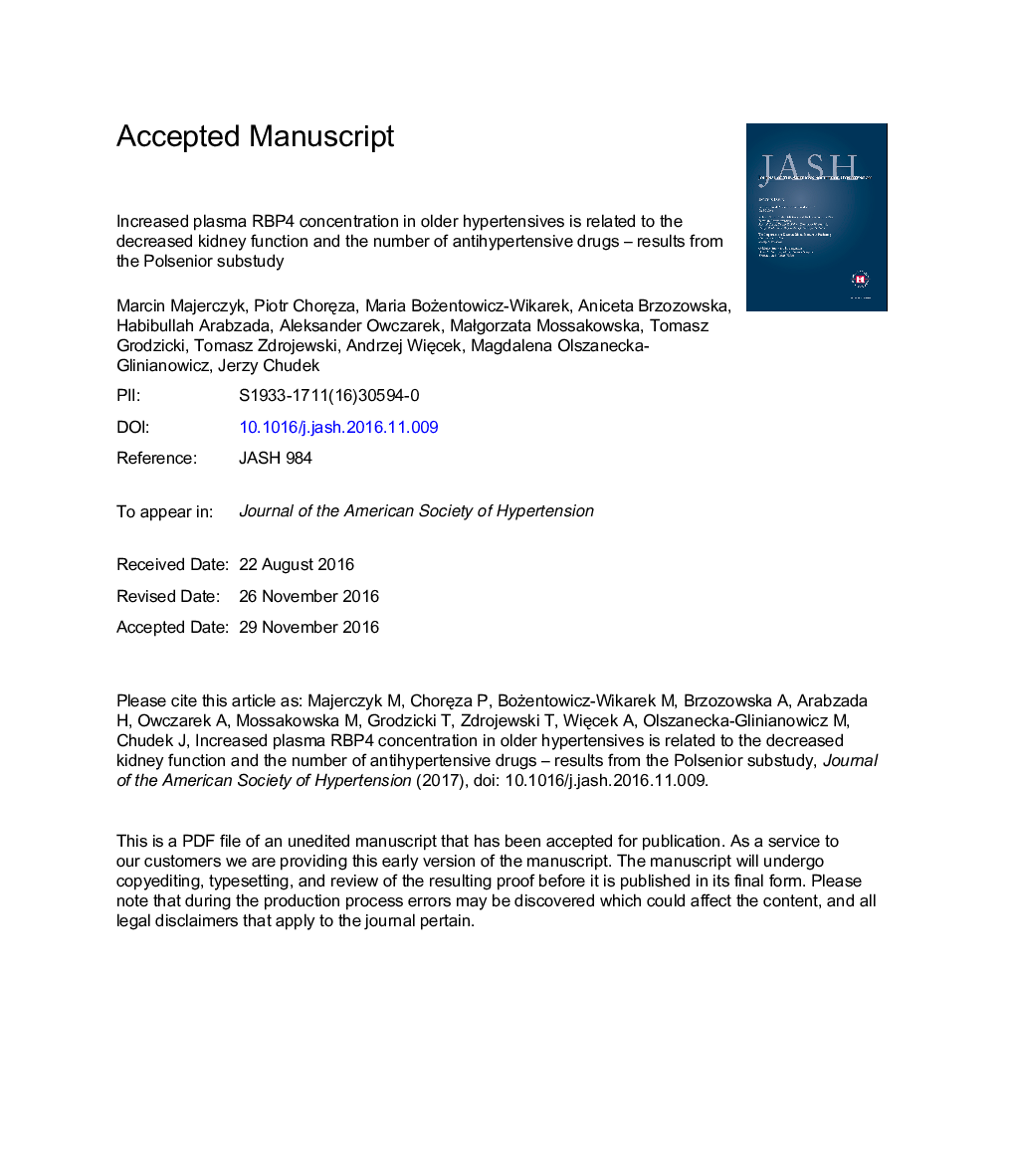| Article ID | Journal | Published Year | Pages | File Type |
|---|---|---|---|---|
| 5613940 | Journal of the American Society of Hypertension | 2017 | 34 Pages |
Abstract
Increased plasma retinol-binding protein 4 (RBP4), a novel adipokine, has been associated in previous studies with obesity, type 2 diabetes, dyslipidemia, hypertension (HT), atherosclerosis, and coronary artery disease. This study aimed to analyze the relationship between HT occurrence and its treatment, and plasma RBP4 concentrations in the older polish population. The study sample consisted of 1728 (890 men and 838 women) PolSenior study participants aged 65 years and older with available plasma samples and NT-proBNP values below 2000 pg/mL. The analysis included body mass index, waist circumference, blood pressure, antihypertensive medication, estimated glomerular filtration rate, serum glucose and insulin (and the homeostatic model assessment of insulin resistance), and plasma RBP4 levels. RBP4 plasma concentrations were higher in hypertensive (N = 645) than normotensive (N = 236) men (43.4 [30.4-64.8] vs. 38.1 [27.1-54.4] ng/mL, respectively; P < .01) but not in women (44.6 [29.6-63.5] vs. 40.7 [29.1-58.1] ng/mL, respectively; P = .21). In the subanalysis, higher plasma RBP4 levels were observed in women with treated than untreated HT and in subjects taking four of more antihypertensive drugs. The linear regression shown that estimated glomerular filtration rate (β = â0.015), thiazide diuretics (β = 0.041), and α-blockers (β = 0.049) were explaining log10RBP4 plasma levels variability in the study group. Older male Caucasians with HT are characterized by elevated plasma RBP4 levels. This increase is proportional to the number of antihypertensive drugs and decreased glomerular filtration rate. Among the antihypertensive drugs, only thiazide diuretics and α-blockers had a significant influence on RBP4 levels.
Related Topics
Life Sciences
Neuroscience
Endocrine and Autonomic Systems
Authors
Marcin MD, Piotr MSc, Maria MSc, PhD, Aniceta Brzozowska, Habibullah BSc, Aleksander MSc, PhD, MaÅgorzata MSc, PhD, Tomasz MD, PhD, Tomasz MD, PhD, Andrzej MD, PhD, Magdalena MD, PhD, Jerzy MD, PhD,
